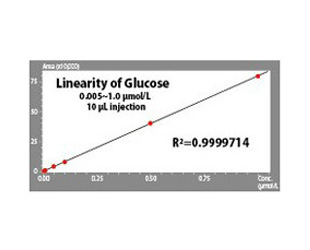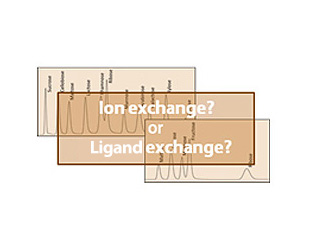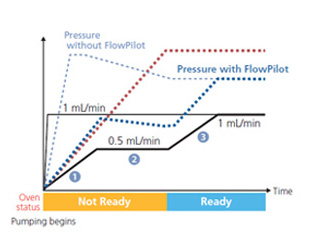Reducing Sugar Analysis System
Nexera Reducing Sugar Analysis System
The Nexera reducing sugar analysis system uses Shimadzu’s unique post-column boric acid-arginine fluorescence derivatization method. Unlike the refractive index detectors and evaporative light scattering detectors (ELSD) commonly used for sugar analysis, this system reduces the effects of impurities and offers both high sensitivity and a wide dynamic range. As a result, sugars contained in samples can be analyzed simultaneously, without dilution even when there are significant concentration differences.
Features
-
This system uses a post-column fluorescence derivatization reaction using arginine as a reaction reagent and supports sugar analysis with high sensitivity and high-detection selectivity
-
This system can be applied to separation by a variety of columns used in sugar analysis
-
- Protects Expensive Columns:FlowPilot
- Mobile Phase Levels Measured in Real Time
- Unique design to ensure reliable sample cooling
News / Events
-
Shimadzu has released the Nexera MX.
Nexera MX processes twice the number of samples as conventional LCMS systems in the same amount of time.
-
“Advanced i-Series” High Performance Liquid Chromatograph
Retaining the excellent basic functions of the flagship “i-Series”, the Advanced i-Series boasts increased pressure resistance and additional functions to support remote work including working from home.
-
Shimadzu has released the ELSD-LT III Evaporative Light Scattering Detector for HPLC.
The evaporative light scattering detector (ELSD) is a general-purpose universal detector that can even detect components with no UV absorption, such as carbohydrates, lipids, surfactants, and synthetic polymers.
-
Shimadzu has released the Microsampling Device, MSW2™ Type Udck™
For Research Use Only. Not for use in diagnostic procedures.
-
Shimadzu has released Shim-pack MC PLONAS Series.
Shim-pack MC PLONAS 2.7 μm columns reduce the back pressure yet maintain the performance of a sub 2 μm fully porous particle column. The pressure limit is 40 MPa.
-
Application Note: "Analysis of Pharmaceuticals' Impurity - Regulations and Analysis for Carcinogenic Substances -"








